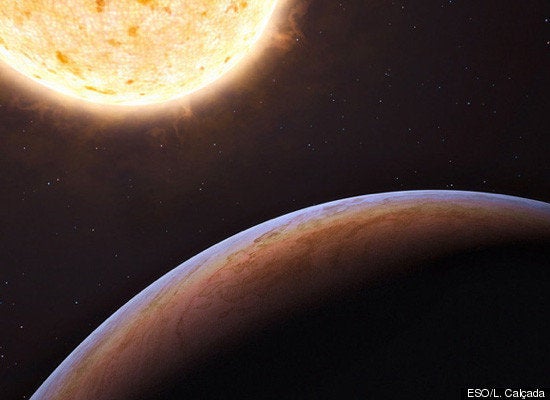
A team of researchers has discovered a Jupiter-like planet located on the outskirts of our Milky Way galaxy. It is the first of its kind to be discovered, as it is believed that the planet (called HIP 13044b) and its parent star (HIP 13044) formed outside of our galaxy and were "captured" by the Milky Way some six billion years ago, Space.com reports.
"The discovery is the first proof astronomers have that planet formation can indeed take place in other galaxies," writes National Geographic.
Scientists at the European Southern Observatory's La Silla Observatory in Chile first observed the planet, which is now located 2,000 light-years from Earth in the constellation Fornax.
Johny Setiawan, the team's head researcher told Space.com that the discovery of HIP 13044b was a surprise. "I was not expecting it in the beginning," Setiawan said. According to National Geographic, "Setiawan and his team inferred the planet's existence based on the way the gas giant gravitationally tugs on its parent star, causing the starlight to wobble slightly."
HIP 13044b's composition may be radically different from that of other planets scientists have discovered within the Milky Way. National Geographic explains:
Based on current theories for planet formation [...] astronomers say HIP 13044b shouldn't have been born in the first place: The planet's parent star is extremely metal poor, meaning it contains very few elements heavier than hydrogen and helium.
Astronomers think stars and their planets are made from the same initial building blocks, so if a star has few metals, the disk of material that surrounded the star when it was young--and from which its planets are born--was also metal-poor.
Even though gas giants are made of mostly hydrogen and helium, astronomers think the planets still require an initial core of heavy elements to attract lighter gases and grow.
The planet may be entirely gaseous, suggested Rainer Klement, who co-authored a paper with Setiawan about HIP 13044b.
But, Space.com notes, HIP 13044b is in danger. The aging parent star expanded considerably as it entered its red giant phase and will only continue growing. HIP 13044b's orbit is being pulled tighter and tighter by the mighty star; eventually, it seems the planet will be destroyed.
[h/t CBS News]
